Safety transportation LNG – LPG requires strict safety measures. Proper handling, storage, and transportation procedures must be followed to prevent accidents. Specialized vessels and trucks are used for transportation, and safety regulations are in place to ensure the safe handling of these hazardous materials.
It is important for companies involved in the transportation of LNG and LPG to adhere to industry standards and guidelines to minimize the risk of incidents.
Safety record
The safety record of the marine Critical review of components of the LNG import systemtransportation of liquefied gases is second to none. Records of shipping accidents have been available, with a good degree of accuracy, since the beginning of the 1980’s and there is no record of any gas ship above 5 000 m3 being lost in service since this date. The number of accidents per year has remained roughly the same, even though the number of ships is constantly increasing. The total number of liquefied gas carriers was 722 in 1983, 757 in 1990 and 1 009 in 1997 and the total number of accidents for those three years were respectively 48, 45 and 27.
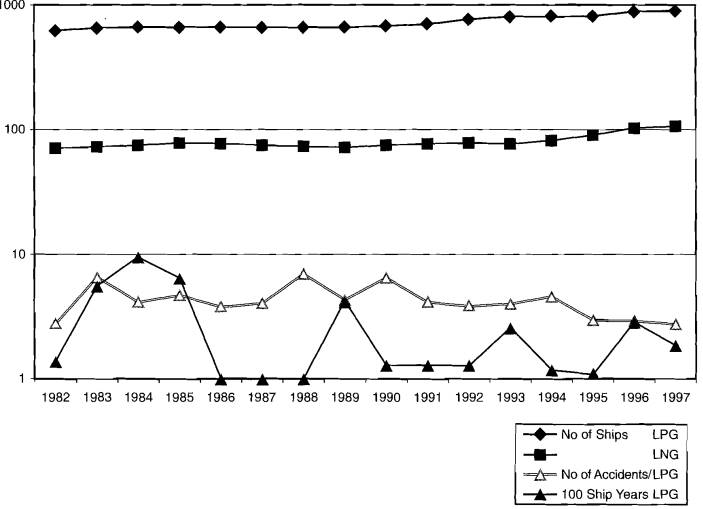
The average age of the liquefied gas fleet is quite high and there is a temptation to suggest that old ships are more accident-prone than newer ships. Obviously much depends on the quality of maintenance applied to the ship throughout its life. A recent survey by a leading classification society has shown that a liquefied gas carrier is most at risk when it is four years old. For the rest of its life, even up to thirty years or more, the number of accidents remains approximately the same. This shows that liquefied gas tankers are, in general, very well maintained and also that they are operated by well-trained crews.
The majority of recorded liquefied gas carrier accidents are caused by reasons not specific to gas carriers, such as navigation, mechanical fault or human error. The number of accidents directly attributable to the cargo containment, machinery and handling is very limited.
The situation regarding terminals is slightly different. There are few reliable statistics of accidents at terminals. It is difficult to get information, except for incidents large enough to be reported in the international press. It is also difficult to differentiate between incidents happening in the storage plant and on the jetty and those happening in the processing plant. There are records of some very large fires occurring in storage plants and refineries, but only a very few actually involved loading jetties and ships.
Hazards and risks
Introduction
Liquefied gases are classed as hazardous commodities and, since the beginning of their transportation by ship, they have always generated a lot of controversy, particularly Liquid Natural Gas (LNG), of which large quantities are transported on the largest ships of the fleet. Let us try to review the reliability and safety of the marine transportation of liquefied gases, based on the experience of almost 60 years commercial operation.
The previous chapters of this book have described the history and the design, construction and operation of gas carriers and gas terminals and have given a brief overview of those aspects of current practice which aim to avoid accidents and minimise the consequences when accidents do occur. Much of this practice is directed towards the variety of contingencies associated with day-to-day operations. However, in the liquefied gas industry, particular attention is focused on the reduction of the risk of an uncontrolled release of large quantities of combustible liquid or vapour, since such a release could have serious consequences. In a release situation, asphyxiation and frost burns may lead to injuries and fatalities among people at the release site. An ignition of the released gas would result in fire or explosion, considered to be the most serious incidents. Present technology, associated with the existing design, construction and operating standards imposed by the nature of liquefied gases, render the risk of spillage intrinsically low. However, making the most appropriate selection from the various design and contingency options available may not be easy. An up-to-date knowledge of the hazards of liquid and vapour release is necessary. Skilled judgement must be applied to the likelihood of such hazards occurring, in the context of the choices available.
The words «hazard» and «risk» are frequently used and it is essential to have a clear definition of these terms in the current context. The following definitions are based upon those currently used in hazard and risk assessment reports.
A Hazard is a physical situation which has the potential to cause harm. The assessment of a hazard includes the identification of both the undesirable situation and its potential consequences. For example, a storage tank containing liquefied gas is a hazard to the extent that, if it fails, it may release some or all of its contents which will form a vapour cloud. A cloud of flammable vapour is a hazard to the extent that, if it ignites, it may cause damage by radiation or by the generation of over-pressures.
Risk is the probability that a hazard may be realised in a given span of time, or the probability that a person or group of persons, as a result of the hazard occurring, may suffer a specified level of injury in a given timespan. For example, in the case of storage tank failure, the risk may be expressed simply as the probability of failure of the tank in its lifetime or, alternatively, as the probability of injury to a plant operator, or to a given number of people, per year, as a result of tank failure.
From these definitions, it can be deduced that, when a particular hazard is assessed to have the potential for very serious damage, the expected frequency attached to that hazard must be very low, preferably as close to zero as reasonably practicable.
Over the years, since the beginning of international trading in liquefied gases, extensive world-wide research has been conducted into potential causes and consequences of spillage. The following paragraphs will give a review of the current knowledge regarding hazard identification and consequences and of the quantification and assessment of risks.
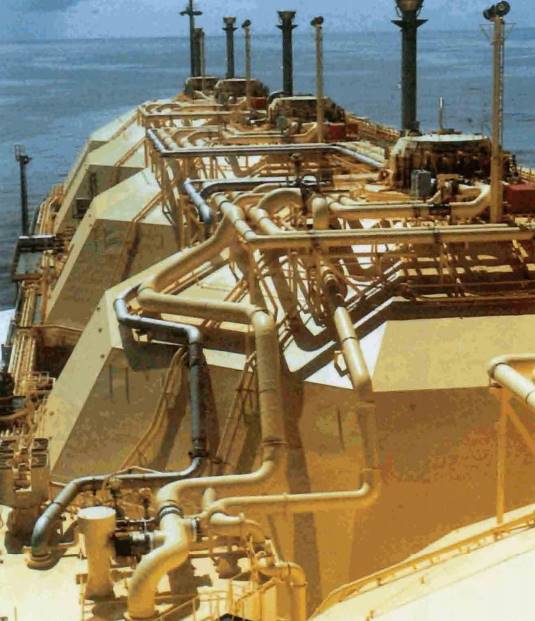
Hazard identification
The potential consequences of a major accident are well understood by the liquefied gas industry. A number of systematic techniques to identify hazards have been developed to help prevent accidents.
Identifying hazards is the first and perhaps the most important step in risk management. Without identifying all the hazards, it is impossible to complete the process. Knowing what can go wrong is also a key element in meeting all regulatory requirements. The following methods are those most widely used for the identification of hazards:
- Experience from previous assessments.
- Checklists.
- Hazard and Operability Studies (HAZOP).
- Failure Mode and Effect Analysis (FMEA).
- WHAT-IF studies.
- Task analysis.
The latter is a systematic method for analysing a task in terms of its aims and the actions and plans required to achieve those goals. It is a very useful technique to identify hazardous situations created by human error.
Human error is considered to play a part in most industrial accidents. Much has been written on the subject and human factors must definitely be incorporated into the hazard identification techniques.
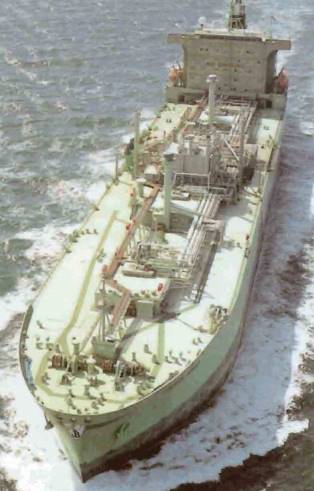
A comprehensive review of hazard identification techniques, as they apply directly to gas tankers and terminals, has been compiled by SIGTTO. Potentially hazardous events, typical prevention measures and further guidance is given on all operational aspects, including:
- Supply of liquefied gas to terminal.
- Terminal export to land-based consumers.
- Terminal storage.
- Terminal refrigeration systems.
- Loading system from terminal to ship.
- Shore to ship connections from terminal to ship.
- Ship reception systems for loading.
- Ship off-loading to terminal.
- Ship to shore connections for off-loading.
- Terminal reception systems for off-loading.
- Ship storage tanks and re-liquefaction systems.
- Ship berthing.
- Ship leaving berth.
- Ship movement from sea to berth.
- Ship movement from berth to sea.
- Ship awaiting loading/off-loading offshore.
Consequences of certain types of accident
We have established above that the main hazard identified in the marine transportation of liquefied gas is without doubt a large release or spillage of refrigerated gas and the subsequent vapour dispersion and/or combustion. Extensive studies have been conducted to understand these processes and there is abundant literature available. This chapter will briefly review the technology available to reach a better understanding of these subjects.
LNG and refrigerated LPG, as discussed here, are described as boiling liquids. They are stored at temperatures a few degrees above their boiling point, where their vapour pressure is slightly above that of ambient air pressure. If a release takes place to the atmosphere, any of the following could occur simultaneously:
- Outflow of liquid into the surrounding environment.
- Liquid spreading on the substrate to form a pool.
- Evaporation or boiling to give a vapour which is heavier than air above the pool due to its temperature and/or its molecular weight.
- Dispersion of the gas by the wind and its subsequent dilution with air.
The first aspect to consider in the prediction of the consequences of any accidental release is the rate at which LNG or LPG would be released into the environment and what quantity would be released. Both answers will depend on parameters such as the size and shape of the tank, the position of the tank, the nature of the product, pressures and temperatures inside and outside the tank and whether the leak occurs on land or in water. The literature describes the physics resulting in semi-empircal models for the spreading and evaporation of LPG and LNG on land and water.
The next calculation would be to determine the behaviour of the vapour cloud originating from the pool of liguid. In ell cases the vapour boiling or evaporating from a pool of liquid LPG or LNG is, at first, heavier than air. Many alternative models have been developed to describe the physical processes taking place in heavy vapour dispersion. At a distance from the source, the heavy vapour may become neutrally buoyant, due to dilution with air and the modelling process can be continued, using more conventional passive dispersion models. Many examples have been documented of these simple «integral» types of heavy gas dispersion and passive dispersion models. The use of these models always includes a number of uncertainties and attempts have been made to obtain more accurate results by using «3D» models or by physical modelling in wind tunnels.
The Other Characteristics Specific to Liquefied Gas Tankersvapour of liquefied gases is invisible, but often a white cloud, produced by condensation from the surrounding air, can be seen after a release of refrigerated liquid. The correlation between the boundary of the visible cloud and the boundary of gas flammability varies with the product spilled and the humidity of the air. For LNG released onto water, the limit of the cloud will correspond to the limit of flammability of the released gas. However, this is not always so and, in some cases, in particular LPG, the limit of flammability can extend far beyond the boundaries of the visible cloud.
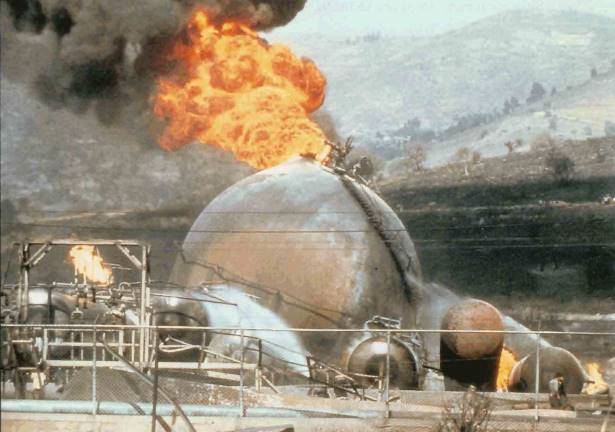
At some stage, the gas cloud dispersing downwind will have diluted to a non-flammable concentration, at which point it cannot be ignited. At the flammable concentration boundary, typically close to the Lower Flammable Limit (LFL) of the vapour air mixture, the gas cloud can ignite and, if unobstructed, burn back to the source pool as a «flash-fire». The extent of the flash-fire can be predicted, using the dispersion models previously described and taking the approximate LFL concentration as the concentration of interest. The flash-fire will probably burn back to the liquid surface of the pool, resulting in a pool fire. The thermal radiation from pools of flammable liquid burning on the ground is typically estimated on the basis of semi-empirical models which have been developed from field experiments.
The fire and explosion models to be used contain various simplifying assumptions and rely on empirical parameters to determine the physical loadings (thermal and blast) at a particular point. These features all introduce an element of uncertainty into the results of a particular fire or explosion consequence assessment.
The greatest difficulties in predicting the effects of fire lie in:
- Defining the precise shape and orientation of the flame with respect to the target.
- Defining the flame emissive power.
In certain circumstances, LNG in contact with water at ambient temperature can give rise to very rapid vaporisation, with resultant shock waves both in the air, as vapour is energetically expelled, and in the water. This is known as Rapid Phase Transition (RPT). The explosion is purely physical with no possibility of ignition but with large release of energy. Further research is still being carried out to try to achieve a more complete understanding of this complex phenomenon.
Carbon steel and certain other metals, which are not intended for use at low temperatures, can become brittle and fracture under stress due to their reduced strength when the temperature falls below a certain point. Cryogenic embrittlement of a vessel or pipe-work containing flammable liquid can lead to failure and the direct escape of liquid or vapour to atmosphere. Suitable materials must be selected for the range of temperatures encountered in normal operations. This must be confirmed by a rigorous quality control and assurance system. The selected materials should also be suitable for low temperatures which might occur under abnormal conditions such as:
- Abnormally low ambient temperatures.
- Emergency depressurisation of liquefied gases stored under pressure.
- Localised cooling on expansion at the point of leakage at valves, flanges and fittings.
- Transfer, by accident or mishandling, of low temperature fluids into a plant intended for higher temperatures.
- The sub-cooling of the LNG or LPG.
Frequency of accident scenarios
a) General – The risks from marine transportation, storage and handling of flammable liquefied gases may be estimated from an evaluation of the frequency and consequences of hazards arising from these operations. These hazards can be estimated using three different approaches:
- From the statistical records of operational events.
- Using historical data for similar equipment used in related or similar applications.
- Through detailed analysis of the relevant system and by studying the potential causes of the incidents.
Incidents may be divided into two categories:
- Those occurring at the terminal, including the jetty, expressed in terms of likelihood per visit.
- Those arising in transit or during port approaches, expressed in terms of frequency per loaded mile.
b) Frequency of Ship Incidents – There are five main concerns with regard to ship operations:
- Collision – where two vessels under way run into each other.
- Striking – where a vessel moored in a port, alongside a berth, or a jetty is struck by a passing vessel.
- Impact – where a vessel runs into a dock wall or jetty.
- Grounding – where a vessel runs onto shore or submerged rocks.
- Fire/explosion – where a fire on the vessel spreads to involve the cargo, or where an explosion is initiated in the cargo itself.
In addition to these main concerns, the following potential concerns are also considered in each case, but are usually found to be negligible when compared with other risks:
- Foundering/capsize – where the ship sinks in rough weather or because of leaks.
- Structural failure – where the cargo tank cracks due to fatigue, wave load, vibration or adverse cargo load distribution.
- Aircraft strike – where an aeroplane or helicopter crashes into the ship.
- Spontaneous failure – where a manufacturing defect leads to an apparently spontaneous failure of the cargo tank.
- Refrigeration failure – where breakdown of the refrigeration plant on a liquefied gas ship leads to the cargo boiling and escaping.
- Domino accident – where an accident on one ship either causes or is caused by an accident on a nearby ship.
Data may be available for existing facilities from the Port Authority or from the operator’s own incident records. Where generic data is not appropriate for a particular situation, simulation methods may be adopted, to estimate ship incidents and release frequencies.
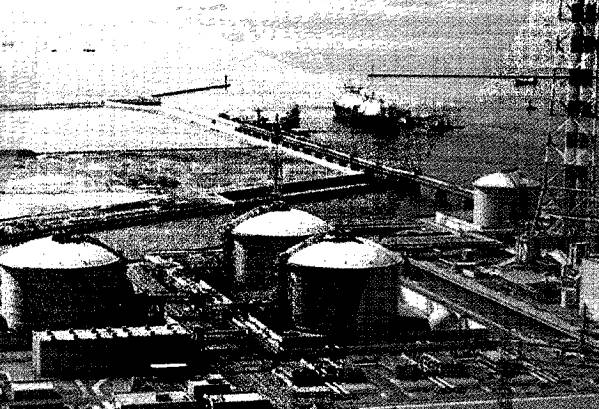
When assessing the critical speeds at which collisions and groundings would cause significant damage to a vessel, account should be taken of the following factors:
- The angle of approach and the location of impact on the struck ship.
- Whether the struck ship was moored alongside or floating free.
- The effect of added water mass on the dissipation of energy in the water.
- The draft and freeboard of the striking ship in relation to those of the struck ship.
- The apportionment of energy absorbed between the two ships, taking into account the form and stiffness of the striking ship’s bow.
- The degree of distortion which may be suffered by the cargo containment prior to its rupture.
- The significance of dynamic loading of structures during the collision process.
Predictive speed should be applied with due consideration to the assumptions made and the various associated uncertainties.
Read also: List of the Emergency Situations which can happen on the Liquefied Gas Carrier
The probability of cargo loss in a specific incident would be obtained by estimating the proportion of incidents which would breach the integrity of the cargo tanks.
c) Frequency of Terminal Incidents – Operations at a liquefied gas terminal that are of interest in a risk assessment consist primarily of cargo transfers. Incidents may be considered within the following categories:
- Cargo transfer failure – where cargo is spilled while the vessel is loading or unloading. This includes the overfilling of tanks during loading.
- Ranging and mooring failure – where cargo is spilled due to manifold connection failure resulting from excessive movement of the ship alongside during loading or unloading.
- Domino accident – where an accident on one ship either causes or is caused by an accident in a storage or process plant or on another ship.
Incidents at Automation and Process Control of Liquefied Natural Gas Plants and Import Terminals
liquefied gas terminals are recorded on a few data bases. Other sources of data may be available for the site under consideration from the Port Authority or the operator’s own incident record.
Modelling techniques, such as fault and event trees, part-count procedures, etc., may be applied to represent a particular facility. In assessing the frequency of spills at a particular facility, the effects of the following features may be taken into account:
- Quick-release couplings on the connections.
- Level and other alarms and trips.
Accident scenarios may be developed, taking into account these and other features, to determine the frequency of particular consequences.
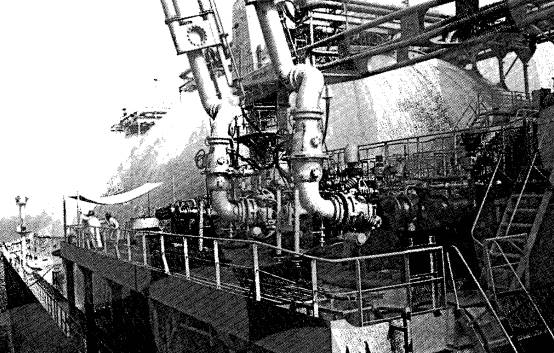
d) Other Hazards – The likelihood of hazards other than those involving ship and terminal operations can be estimated in the same way as described above. For example, these could involve earthquakes, severe weather hazards, events involving aircraft and other impacts, escalated events due to other industrial sites located near-by.
e) Ignition of Releases – A release of flammable liquefied gas will present the greatest hazard when ignited. The frequency of the release combined with the probability of the release ignition will give the risk to be expected from the incident. The following events can be potential causes of a release ignition:
- Ignition by the release event.
- Static electricity.
- External ignition sources.
The estimated probability of ignition of vapour clouds is often based upon judgement, taking into consideration general statistics of ignition from accidental releases. These statistics tend to show that small leaks are unlikely to ignite but that the probability of ignition increases with the size of the release.
Risk assessment
In previous pages, the major hazards to be considered in the assessment of the risks which may arise from the operation of a liquefied gas facility have been reviewed. This would represent the first part of a risk analysis procedure. Such a procedure is generally used to confirm the design of new liquefied gas facilities or to review the safety and cost-efficiency of existing operating facilities. The review of possible safety measures and of their cost effectiveness would complete the procedure.
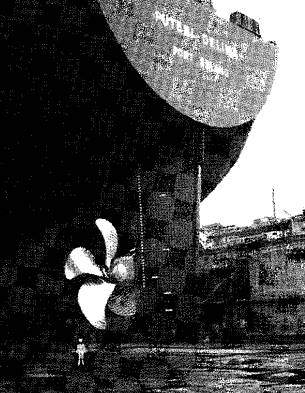
When designing a new facility, a preliminary safety assessment can be made, for example, at the start of planning, to help decide between several options based on their cost-effectiveness.
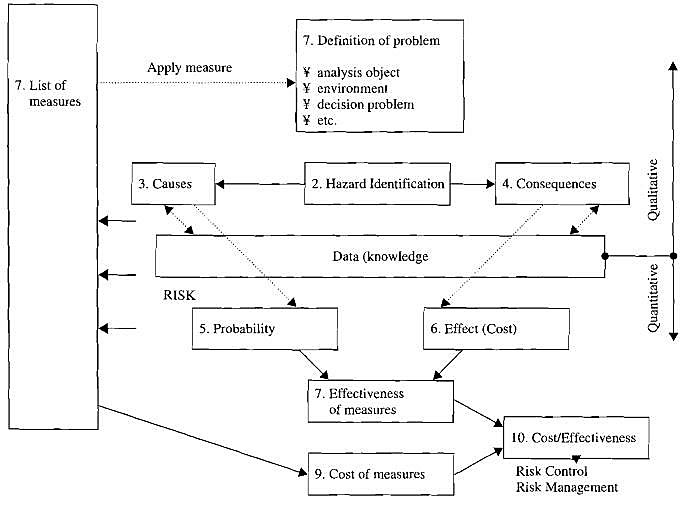
It is recommended to undertake regular safety audits or safety reviews of operating liquefied gas facilities to ensure continuing high standards of management, operation and maintenance. Risk assessment can be used following such audits, to evaluate the need for extra alarm and control systems or extra safety equipment.
